The southern part of modern-day France was one of the first regions in Europe to become part of the Roman Empire.
Multiple settlements were constructed along the important road leading to Hispania called the Via Domitia. This included the modern-day city of Nîmes.
The richness of the colony along this important road is reflected in the Roman architecture that can be found here. Like in all other Roman cities. this included temples, bathhouses, amphitheaters, and a forum.
In this article, you’ll discover some of the most interesting facts about the Maison Carrée in Nîmes, a remarkably well-preserved Roman temple.
1. It’s located in the northern part of modern-day Nîmes
The Maison Carrée is an ancient Roman temple that is situated in the northern part of Nîmes, a city in southern France.
Nîmes is situated within the Gard Department of the Occitanie region in the utmost southern part of the country.
The temple is far from the only ancient Roman landmark that still stands in the city today. The most amazing Roman remains in the city are:
- Nimes Aqueduct (which features the Pont du Gard)
- Arena of Nîmes
- Temple of Diana (Nîmes)
The temple is situated just a few hundred meters north of the magnificent Roman amphitheater which formed the heart of the ancient Roman settlement.
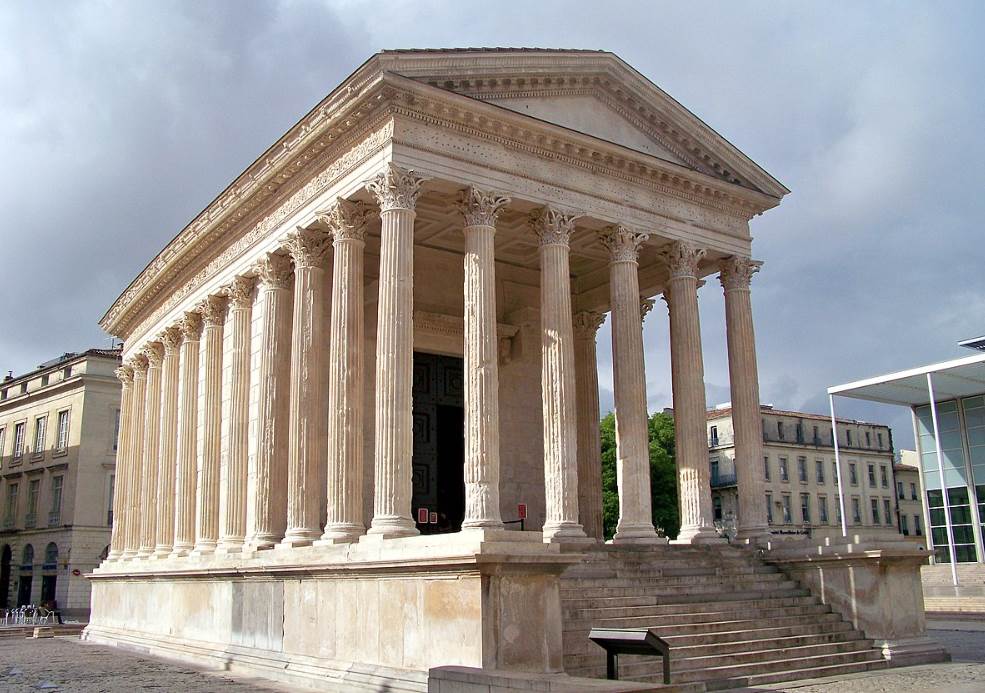
2. The temple was completed during the reign of Emperor Augustus
Whether or not a structure already existed in this location remains unknown. We do know that Nîmes was founded as a Roman colony named “Colonia Nemausus” before Augustus came to power in 27 B.C.
Colonia Nemausus gradually grew in importance as it formed in an important settlement on the road to Hispania, modern-day Spain, called the Via Domitia.
Montpellier is another major city in the area that was founded along this road in a Roman Province that was known back then as “Gallia Narbonensis.”
The temple was completed around 2 A.D. and the religious structure was officially inaugurated somewhen between 4 and 7 A.D.
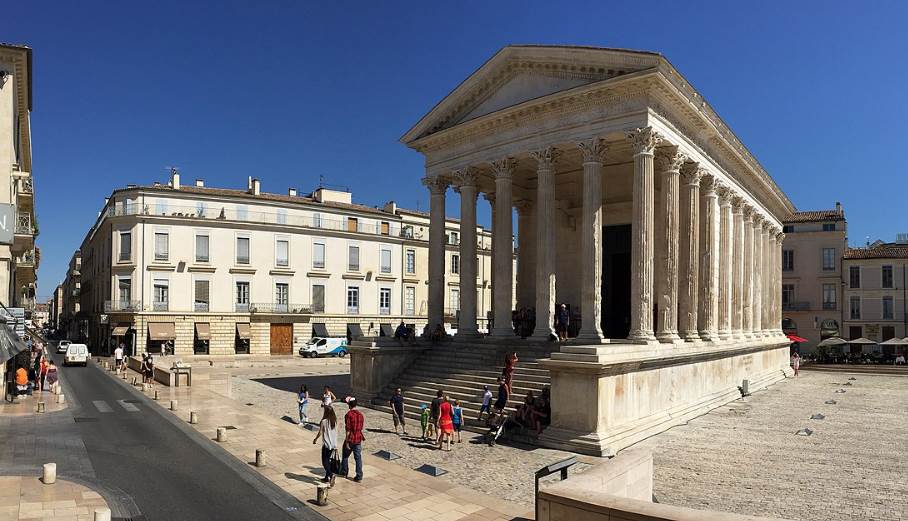
3. The temple was dedicated to the grandsons of Emperor Augustus
Although the original inscription on the temple was removed during the Middle Ages, it was reconstructed in 1758 by a local scholar named Jean-François Séguier.
He simply connected the dots that were left behind on the front frieze and architrave when the inscription was created.
It uncovered that the temple was dedicated to Gaius Caesar and Lucius Caesar, two grandsons of the first Roman Emperor Augustus who were his heirs and who both died young.
The full inscription read:
To Gaius Caesar, son of Augustus, Consul; to Lucius Caesar, son of Augustus, Consul designate; to the princes of youth.

4. The name of the temple doesn’t reflect its Vitruvian design
The temple is considered to be a prime example of Vitruvian architecture, a style defined by the Roman architect and engineer Vitruvius (80-15 B.C.).
He is the man who wrote “De Architectura” in the 1st century B.C., a work that inspired Leonardo d Vinci’s drawing called “The Vitruvian Man.”
His core principles revolved around three pillars known as “firmitas,” “utilitas,” and “venustas,” or “strength”, “utility”, and “beauty.”
The Maison Carrée in Nîmes can be described as the perfect example of the temple described in Vitruvius’ famous work.
The name of the temple translates to “The Square House,” but this doesn’t reflect its rectangular design.
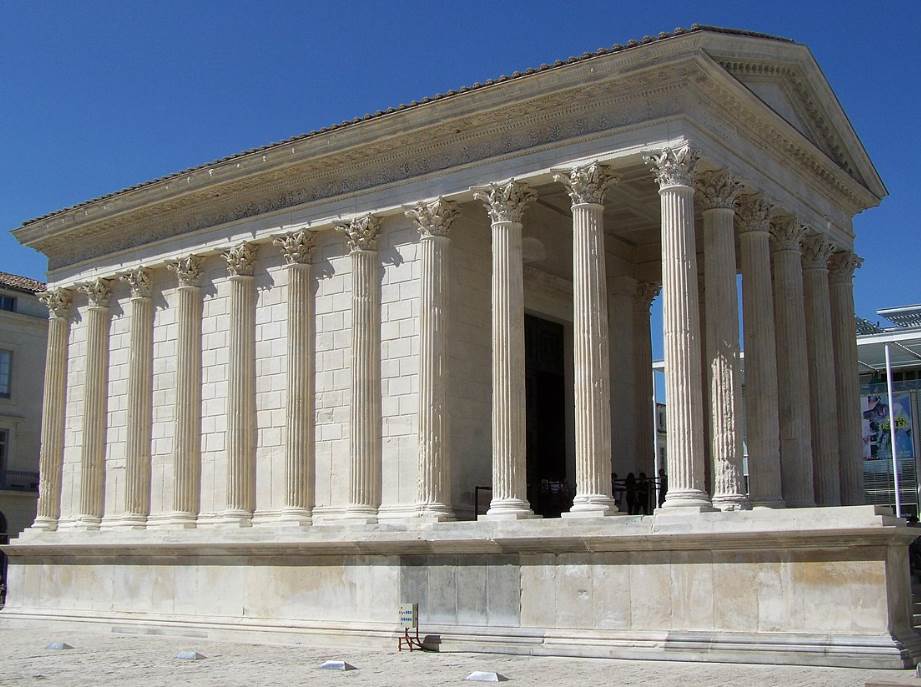
5. It formed the inspiration for a famous church in Paris
This remarkable temple in Nîmes has inspired some of the most famous Neoclassical buildings ever constructed.
This includes a stunning building in Paris that was originally commissioned to serve as a place of worship for Napoleon’s great army.
La Madeleine was eventually rededicated as an incredible church in the 8th arrondissement of Paris following Napoleon’s fall. Its design looks strikingly similar to the temple in Nîmes.
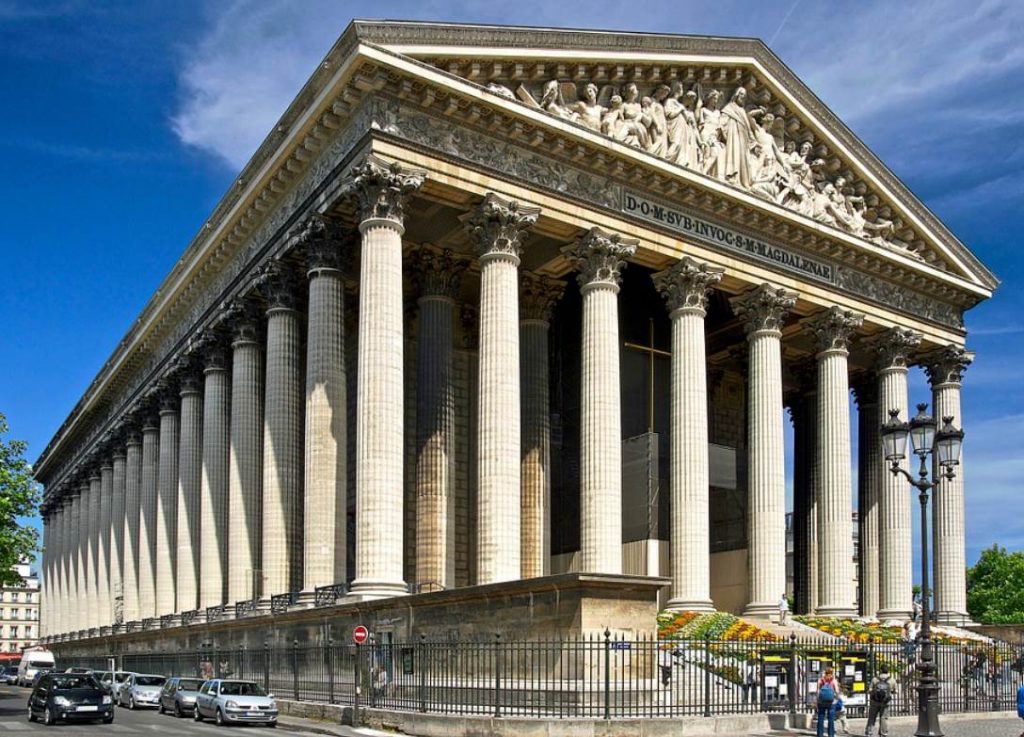
6. It inspired several other buildings all around the world
The church of la Madeleine in central Paris isn’t the only building that replicated the design of this remarkable ancient building.
The St. Marcellinus Church in Rogalin, Poland, looks nearly the same as the Maison Carrée in Nîmes.
Perhaps the most intriguing example is the Virginia State Capitol in Richmond. This building was an idea of Thomas Jefferson who had a stucco replica made of the temple in Nîmes.
He brought it back home and initiated the construction of the monumental seat of the state government of the Commonwealth of Virginia which was constructed between 1785 and 1788.

7. It is remarkably well-preserved and features a distinctive portico
The distinctive design of the Maison Carrée has been highly influential in the world of architecture.
One of the main reasons is the fact that it’s one of the best-preserved ancient Roman temples in the world. This is quite remarkable because this building is over 2,000 years old.
Granted, the building has undergone several restorations throughout its history, including the addition of a new ceiling in the early 19th century.
The deep portico of the temple covers nearly one-third of the temple’s total area and is lined with six Corinthian columns. This design differentiates it from ancient Greek temples.

8. How big is the Maison Carée in Nîmes?
Like most ancient Roman temples, it was built on a podium that stands about 2.85 meters (9.35 feet) above the ground below. This emphasized the importance of the religious structure in Roman times.
The temple has dimensions of 26.42 x 13.54 meters (86.67 x 44.42 feet) and reaches a height of 17.1 meters (56.1 feet).
The door that leads to the windowless small interior is huge as it has a height of 6.87 meters (22.53 feet) and a width of 3.27 meters (10.72 feet).
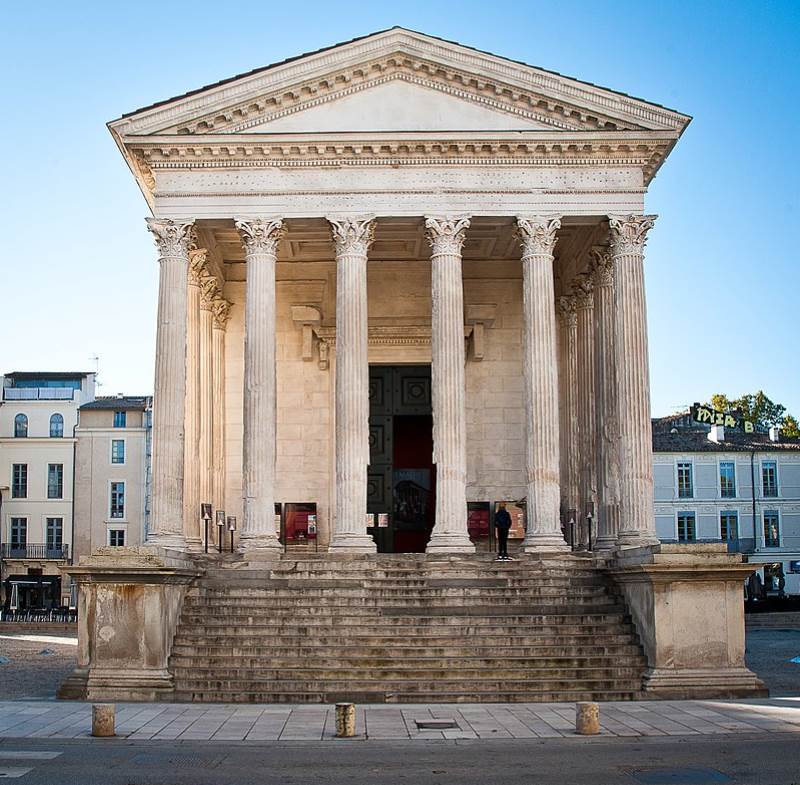
9. It housed a famous art museum in Nîmes until the early 20th century
Perhaps one of the most interesting facts about the Maison Carrée in Nîmes is that it served an important purpose for nearly a century between 1821 and 1907).
The 2 millennia-year-old building housed the Musée des Beaux-Arts de Nîmes after the restoration project of the early 19th century was completed.
British architect Sir Normas Foster designed a new building right across from the temple that now houses the museum and a public library.
This modern structure was completed between 1988 and 1992 and is known as the “Carré d’Art.” It features a similar portico which resembles that of the ancient structure.
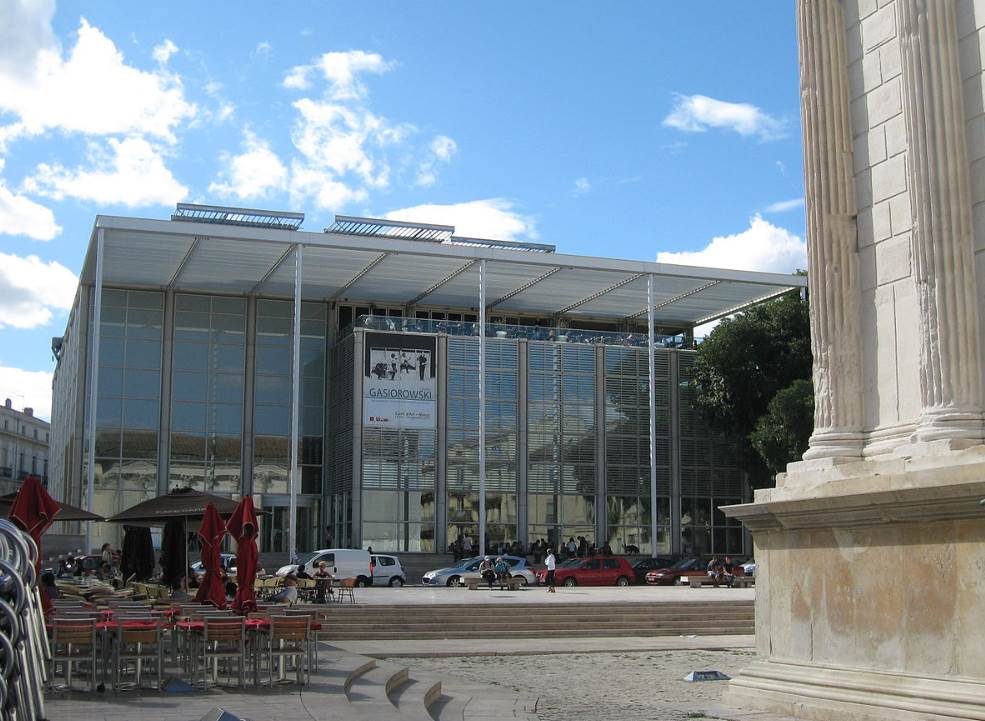
10. It underwent a facelift in the 21st century which restored it to its former glory
The early 19th-century renovation not only added a new ceiling to the rather small interior of the building but also cleared the temple from structures that were constructed against it.
The Roman forum that once occupied the space near the temple was cleared and the square in Nîmes was transformed into an enjoyable place to hang out.
The state of the temple had deteriorated quite a bit by the early 21st century. That’s quite normal for a building that celebrated its 2,000th anniversary, don’t you think?
The restoration of the ancient structure was completed between 2006 and 2011, and it has been shining just like it did during the reign of Emperor Augustus in the early 1st century A.D. ever since.



